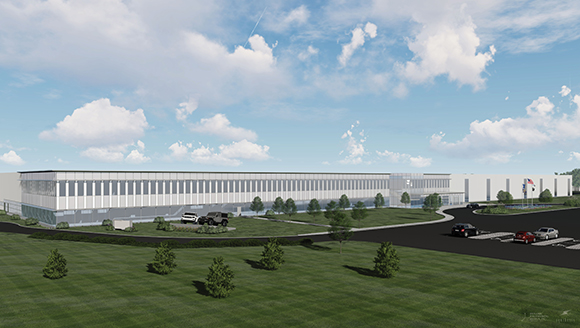Before the merger of Fiat Chrysler Automobiles (FCA) and Groupe PSA was officially completed to create Stellantis in January 2021, company leaders were looking ahead, as FCA in early 2020 announced its intent to expand in Kokomo, Indiana, with a $400 million investment to retool a transmission plant for production of a new engine.
The investment will support assembly of the GMET4 engine. The new production will require a workforce of more than 1,000 by the end of 2021 with these positions filled through a combination of current employees and new hires.
Erin Schneider, director of economic development for Duke Energy Indiana, says the project win involved several teams on the local and state levels, and Duke played an important role.
“As their current energy provider, Duke Energy assembled a strategic team led by Large Account Management that included Government Affairs, Regulatory Strategy and Economic Development,” she says. “We promised strategic solutions and collaborative support to their leadership team. We challenged ourselves to think bigger, recognizing that companies like Stellantis have many facilities and therefore many opportunities to grow elsewhere. We stayed aligned with our external partners and our internal partners ensuring our proposed strategy was clear, relevant and supported by all groups. The teamwork across Indiana resonated greatly with the company, and the plant that was originally planned for another state chose Indiana.”
Teaming Up to Charge Up
Duke also is a leader in building out EV infrastructure. In May 2021 the Indiana Utility Group, comprising eight Indiana utilities, was selected to implement the state’s direct-current fast charging program, work that the utilities have been working on already for two-and-a-half years. “The funding will be shared among the companies that are planning 61 charging locations throughout Indiana,” Schneider explains, “including 17 in Duke Energy’s Indiana service area at sites stretching from Rochester in the north to New Albany in the south.”
Following an uptick in distribution and food processing, Schneider says her team is currently working with several manufacturers associated with electrification. “These projects are educating us about ever-evolving renewable energy needs,” she says, “and empowering us to develop new and more flexible programs and solutions that we hope enable our communities and Indiana to best compete for these transformational economic development opportunities.”
Meanwhile, collaboration is manifesting itself in another powerful alliance.
“The economic development teams from seven Indiana energy companies launched the Indiana Power Partnership (IPP),” Schneider says. “The alliance has allowed us to not only streamline strategies but also greatly improve them with greater diversity at the table and the combined resources to transform the way we support our communities. The IPP is continuing to develop new and innovative ways to empower economic development in Indiana, and we know that we work better when we work together.”
